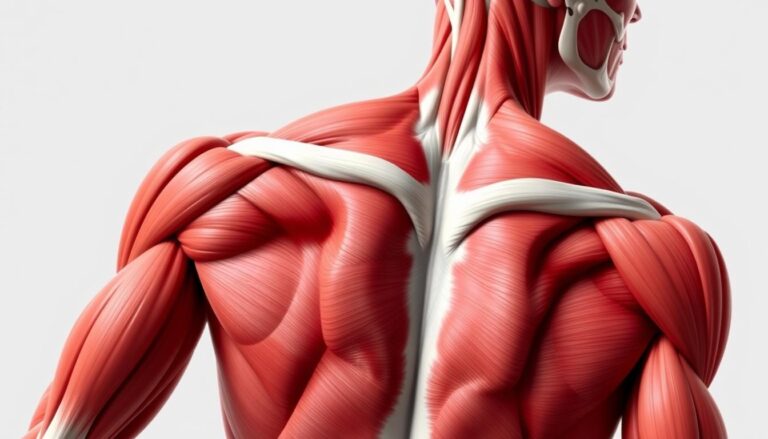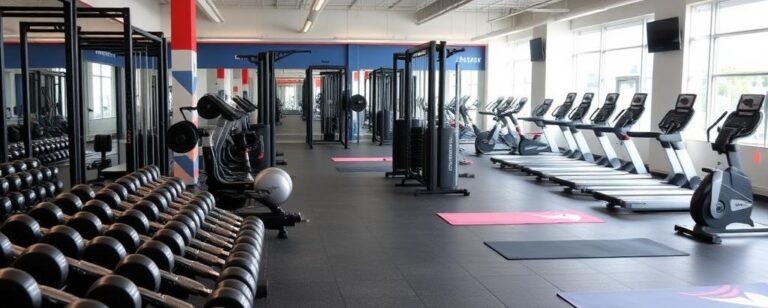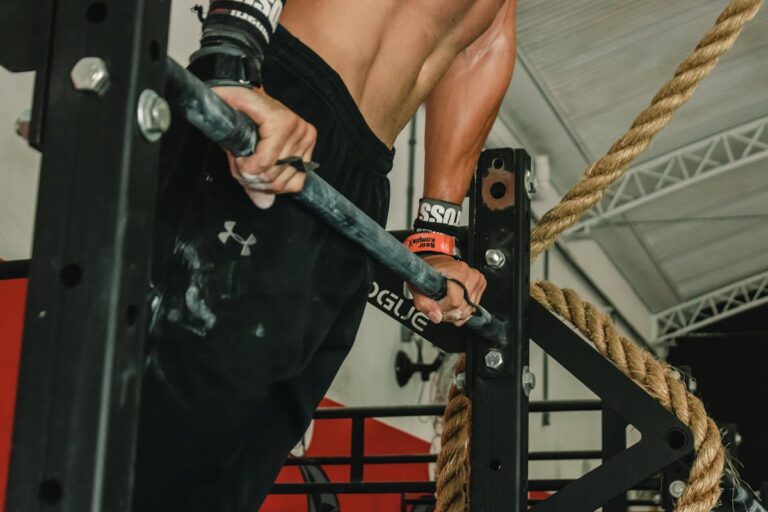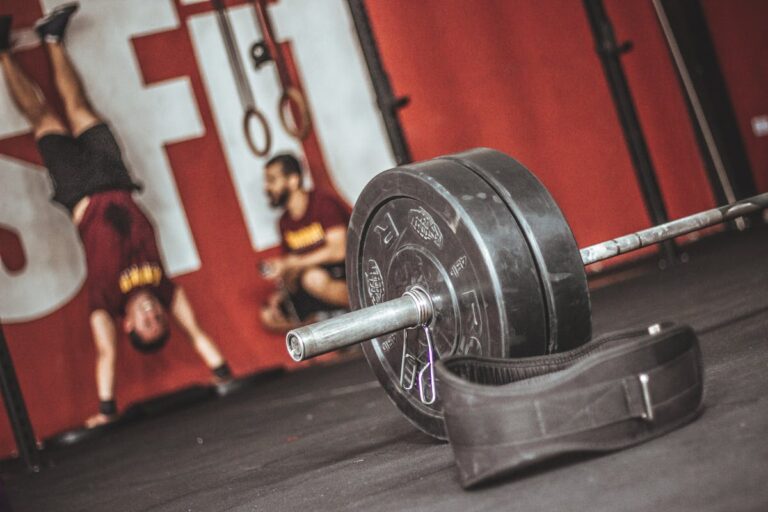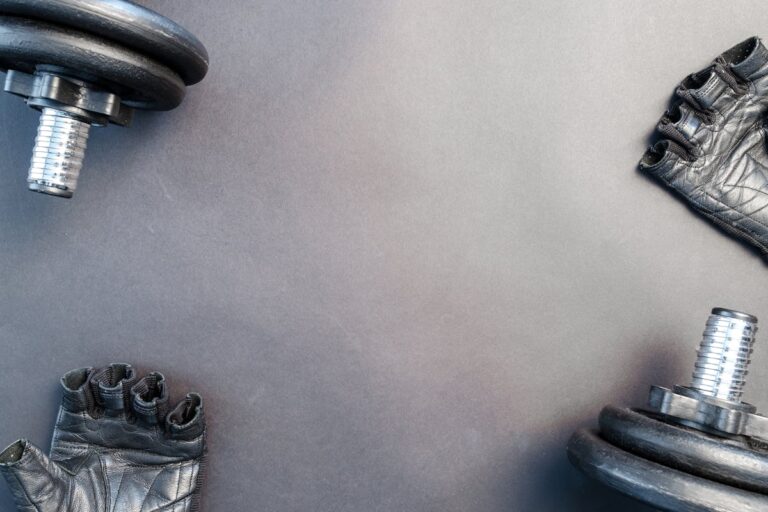Get Fit with an Effective Cardio Boxing Workout Regimen
Cardio Boxing Workout Regimen
Get fit with an effective cardio boxing workout regimen. Discover the best boxing workout at home. Boost your fitness with an invigorating boxing cardio workout today!
Table of Contents
Benefits of Cardio Boxing
Cardio boxing offers a myriad of benefits, making it a popular choice for fitness enthusiasts. The exercise combines cardiovascular and strength training components, providing a comprehensive workout suitable for a range of fitness levels.
Cardiovascular Health
Cardio boxing significantly enhances cardiovascular health. It involves rapid, continuous movement, which increases the heart rate and improves cardiac function. Regular sessions can lead to better circulation, lower blood pressure, and a reduced risk of heart disease.
Calorie Burning
This workout is highly effective for burning calories. Due to its high-intensity nature, cardio boxing can burn more calories compared to other forms of exercise. Participants can expect to burn between 500 to 800 calories per hour, making it an excellent choice for weight loss and management.
Muscle Toning
- Upper Body: Punching movements engage muscles in the shoulders, arms, and chest.
- Core: The twisting actions required for various punches work the abdominal muscles and obliques.
- Lower Body: Footwork and stances strengthen the legs, including the calves and thighs.
Stress Relief
The physical exertion involved in cardio boxing can significantly reduce stress levels. Punching and kicking acts as a form of release, helping to alleviate built-up tension. Additionally, the concentration required to execute moves can provide a mental distraction from daily stressors.
Improved Coordination and Balance
Cardio boxing requires precise movements and timing, which can enhance overall coordination and balance. Participants develop better hand-eye coordination through repetitive punching drills. Footwork routines improve lower body coordination and stability.
Self-Defense Skills
Though primarily a fitness activity, cardio boxing equips individuals with basic self-defense skills. Learning proper punching techniques and defensive moves can provide confidence and a sense of security, knowing some self-protection methods.
Mental Health Benefits
The endorphins released during a cardio boxing workout can boost mood and alleviate feelings of anxiety and depression. Regular participation in such an engaging and dynamic exercise routine can improve overall mental well-being.
Social Interaction
Attending cardio boxing classes or sessions often involves group participation. This creates opportunities for social interaction, fostering a sense of community and camaraderie among participants.
Increased Stamina and Endurance
Consistent cardio boxing practice builds stamina and endurance. Over time, individuals will find themselves capable of sustaining higher intensity workouts for longer periods, leading to overall improved physical fitness.
Cardio boxing stands out as a diverse and effective workout option, delivering numerous physical and mental health benefits. The combination of cardio, strength training, and skill development ensures a well-rounded fitness regimen.
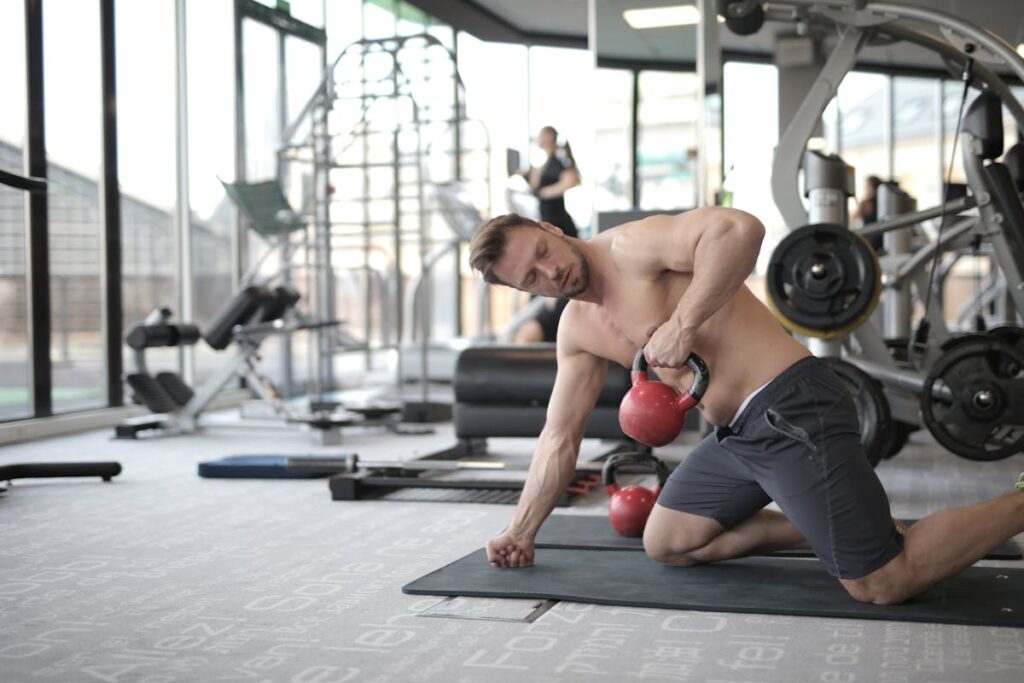
Starting Your Cardio Boxing Journey
Beginning a cardio boxing routine can be both exciting and challenging. To ensure a successful start, follow these steps:
Preparation
Before jumping into cardio boxing, it is important to prepare both mentally and physically:
- Consult a Doctor: Individuals should consult a healthcare provider to ensure they are fit for high-intensity workouts.
- Set Clear Goals: Define what one aims to achieve, whether it’s weight loss, improved stamina, or stress relief.
- Acquire Proper Gear: Invest in good quality boxing gloves, hand wraps, and comfortable athletic wear to prevent injuries.
Basic Techniques
Learning the basics is crucial to avoid injuries and maximize effectiveness:
- Stance: Stand with feet shoulder-width apart, knees slightly bent, and body weight distributed evenly.
- Jab: A quick, straight punch using the lead hand. Practice this to develop speed and precision.
- Cross: A powerful, straight punch with the rear hand. This is typically stronger than the jab.
- Hooks and Uppercuts: More advanced punches that require proper form and timing. These add variety to the workout.
Warm-Up and Cool Down
Implementing a proper warm-up and cool-down routine is essential:
- Warm-Up: Spend 5-10 minutes warming up with activities such as jumping jacks, jogging, or dynamic stretching to increase blood flow.
- Cool Down: After the workout, perform static stretches and breathing exercises to help muscles recover and improve flexibility.
Training Routine
A well-structured training routine might look like this:
- Warm-Up (10 minutes): Light cardio and dynamic stretching.
- Technique Drills (15 minutes): Practice jabs, crosses, hooks, and uppercuts.
- Workout (30 minutes):
- Shadow Boxing: 3 rounds of 3 minutes.
- Heavy Bag Drills: 3 rounds of 3 minutes.
- Circuit Training: Incorporate bodyweight exercises like push-ups, burpees, and squats between rounds.
- Cool Down (10 minutes): Static stretches and breathing exercises.
Consistency and Progression
Consistency is key to progress in cardio boxing:
- Start Slowly: Begin with shorter sessions and gradually increase duration and intensity.
- Monitor Progress: Keep a workout journal to track improvements in stamina, strength, and technique.
- Rest and Recovery: Allocate time for rest days to allow muscles to recover and reduce the risk of overtraining.
By following these guidelines, individuals can embark on their cardio boxing journey with confidence, ensuring a safe and effective workout regimen.
Essential Gear and Equipment
To fully benefit from a cardio boxing workout regimen, one must equip oneself with the right gear and equipment. The following is a comprehensive list of essential items:
Boxing Gloves
Boxing gloves protect the hands and wrists during punches, ensuring safety and enhancing performance. Selecting the proper size and weight is crucial, as inappropriate gloves can lead to injury. It’s suggested to try:
- 12-14 oz for cardio workouts
- 14-16 oz for heavy bag training
Hand Wraps
Hand wraps provide additional support to the wrists, knuckles, and fingers. These should be worn underneath boxing gloves to prevent injuries. They come in varied lengths, typically ranging from 120 inches to 180 inches, and should be secured tightly but comfortably.
Jump Rope
A jump rope is a vital tool to build cardiovascular endurance, improve footwork, and warm up before a workout. Adjustable-length jump ropes are advisable to ensure a perfect fit for one’s height. Weighted ropes can further enhance intensity.
Punch Mitts or Focus Mitts
Punch mitts are used with a training partner or coach to practice combinations, speed, and accuracy. These mitts absorb punches and aid in honing precision and timing.
Heavy Bag
A heavy bag allows for solo practice of punches, kicks, and combinations. It’s essential to choose a durable and appropriately weighted bag. Freestanding bags or those that are hung from a ceiling or stand are common choices.
Boxing Shoes
Proper footwear ensures stability and support during movements. Boxing shoes should be lightweight, have non-slip soles, and provide ankle support. Investing in a good pair will prevent injuries and improve foot agility.
Water Bottle
Staying hydrated is critical during intense cardio sessions. A large, reusable water bottle ensures one remains hydrated throughout the workout.
Towel
Keeping a towel nearby helps maintain hygiene by wiping away sweat, thus preventing it from reaching the eyes and causing discomfort.
Gym Timer
A gym timer aids in tracking rounds, rest periods, and overall workout time. Multi-functional timers can be set for intervals and rounds, optimizing the training session.
Mouthguard
For those who engage in sparring or partner drills, a mouthguard is essential for protecting the teeth and minimizing the risk of oral injuries. Custom-fit mouthguards provide maximum protection and comfort.
Clothing
Comfortable yet functional clothing lightweight and moisture-wicking is essential to ensure easy movement and sweat management. Fitted tops and flexible shorts or leggings are recommended.
Ensuring one has the right gear and equipment not only enhances safety but significantly contributes to the effectiveness of a cardio boxing workout regimen.

Warm-Up Exercises
Before diving into the cardio boxing workout, it is essential to prepare the body adequately with warm-up exercises. Proper warm-ups increase blood flow to muscles, enhance flexibility, and reduce the risk of injury. Here are some effective warm-up exercises to consider:
- Jumping Jacks: Perform for 2-3 minutes. This exercise elevates heart rate and enhances blood circulation throughout the body.
- Arm Circles: Do 15-20 repetitions in each direction. Arm circles loosen up shoulder joints and prepare the upper body for punching motions.
- High Knees: Continue for 1-2 minutes. This exercise engages the core and leg muscles, ensuring that they are primed for the workout ahead.
- Torso Twists: Execute 10-15 twists per side. This movement increases rotational flexibility in the spine, which is crucial for delivering powerful punches.
- Butt Kicks: Perform for 1-2 minutes. Butt kicks warm up the hamstrings and glutes, vital muscle groups for maintaining balance and power during cardio boxing.
- Dynamic Stretching: Spend 3-5 minutes on exercises like leg swings and lunges. Dynamic stretches prepare the muscles by mimicking the movements during the actual workout.
It’s important to perform these warm-up exercises at a moderate intensity. Over-exertion during a warm-up can lead to fatigue, reducing effectiveness in the main workout. An effective warm-up routine sets the stage for a high-energy, injury-free cardio boxing session.
By systematically engaging various muscle groups and increasing the heart rate, these warm-up exercises ensure that individuals are physically and mentally prepared for the demanding cardio routines to follow. In summary, investing time in a comprehensive warm-up session is critical for achieving optimal performance and safety in cardio boxing workouts.
Basic Cardio Boxing Techniques
Cardio boxing is an excellent way to improve cardiovascular health, increase strength, and enhance agility. Mastering the basic techniques is essential for a safe and effective workout. Here are the fundamental moves:
Stance
- Feet Position:
- Stand with feet shoulder-width apart.
- Dominant foot slightly back for better balance.
- Knees:
- Keep knees slightly bent to maintain flexibility.
- Hands:
- Raise hands to cheek level.
- Elbows close to the body.
- Head:
- Keep chin tucked for protection.
Basic Punches
- Jab:
- Extend the lead hand (non-dominant).
- Rotate hip slightly forward.
- Snap the punch back quickly.
- Cross:
- Punch with the rear hand (dominant).
- Pivot on the back foot for power.
- Rotate shoulders and hips with the punch.
- Hook:
- Punch in a semi-circular motion.
- Lead or rear hand can be used.
- Keep the elbow bent at 90 degrees.
- Pivot feet and rotate hips for force.
- Uppercut:
- Punch in an upward arc.
- Bend knees and rotate hips forward.
- Target the opponent’s chin or body.
Defensive Moves
- Slip:
- Move the head to either side to avoid a punch.
- Shift weight using torso muscles.
- Bob and Weave:
- Bend the knees.
- Move body under the opponent’s punch.
- Return to a stable stance.
- Parry:
- Deflect incoming punches with the hands.
- Quick, short movements.
Footwork
- Shuffle:
- Small, quick steps.
- Stay light on the balls of the feet.
- Pivot:
- Rotate on the lead foot.
- Allows for quick directional changes.
- Step and Slide:
- Step forward with the lead foot.
- Follow with the rear foot to maintain stance.
Combining Techniques
- 1-2 Combo:
- Jab followed by a cross.
- Basic but effective combination.
- Double Jab Cross:
- Jab twice, then throw a cross.
- Keeps the opponent guessing.
- Jab, Cross, Hook:
- A powerful three-punch combination.
- Use hip rotation for maximum impact.
Mastering these foundational techniques is crucial for any cardio boxing regimen. Focus on form, maintain a good stance, and practice combining moves to simulate real bouts.
Advanced Cardio Boxing Moves
Cardio boxing involves a set of advanced moves that add a new level of intensity to the workout. These moves not only increase cardiovascular endurance but also build muscle strength and improve coordination.
1. Hook
The hook is a powerful punch targeting the side of the opponent’s head or body.
- Position: Stand in a boxing stance with knees slightly bent.
- Execution: Pivot on the lead foot while turning the hips and shoulders toward the punching side. Keep the arm at a 90-degree angle and deliver the punch in a circular motion.
2. Uppercut
An uppercut is an upward punch, focusing on the opponent’s chin or solar plexus.
- Position: Start in a boxing stance with fists at chin level.
- Execution: Dip slightly by bending the knees and then drive the fist upward using a quick, snapping motion. Rotate the shoulders and hips for power.
3. Cross
The cross is a straight punch delivered with the rear hand, often used to finish combinations.
- Position: Maintain a boxing stance with the rear foot grounded.
- Execution: Push off the back foot, extend the rear hand fully, and rotate the hips and shoulders forward. The other hand remains at chin level to protect the face.
4. Jab-Cross Combination
This combination blends a quick jab with a powerful cross, perfect for developing speed and accuracy.
- Position: Stand with feet hip-width apart, dominant foot slightly behind.
- Execution: Throw a quick jab with the lead hand followed by a cross with the rear hand. Ensure fluidity and minimal pause between punches.
5. Shuffling
Shuffling helps maintain agility and movement during the workout.
- Position: Start in a boxing stance with weight balanced on the balls of the feet.
- Execution: Move in various directions by quickly sliding the feet, ensuring one foot always remains in contact with the ground. Maintain defensive hand positions.
6. Slip and Counter
This move involves avoiding an opponent’s punch and following up with a counterattack.
- Position: Stand with feet shoulder-width apart, hands guarding the face.
- Execution: As a punch approaches, shift the upper body laterally while keeping the feet grounded. Immediately follow with a counter punch, usually a hook or cross.
7. Shadow Boxing with Weights
Shadow boxing enhances endurance and punching power when performed with light weights.
- Position: Hold 1-2 pound dumbbells in each hand and stand in a boxing stance.
- Execution: Perform standard punches (jab, cross, hook, uppercut) while maintaining form and speed. The added resistance of the weights intensifies the workout.
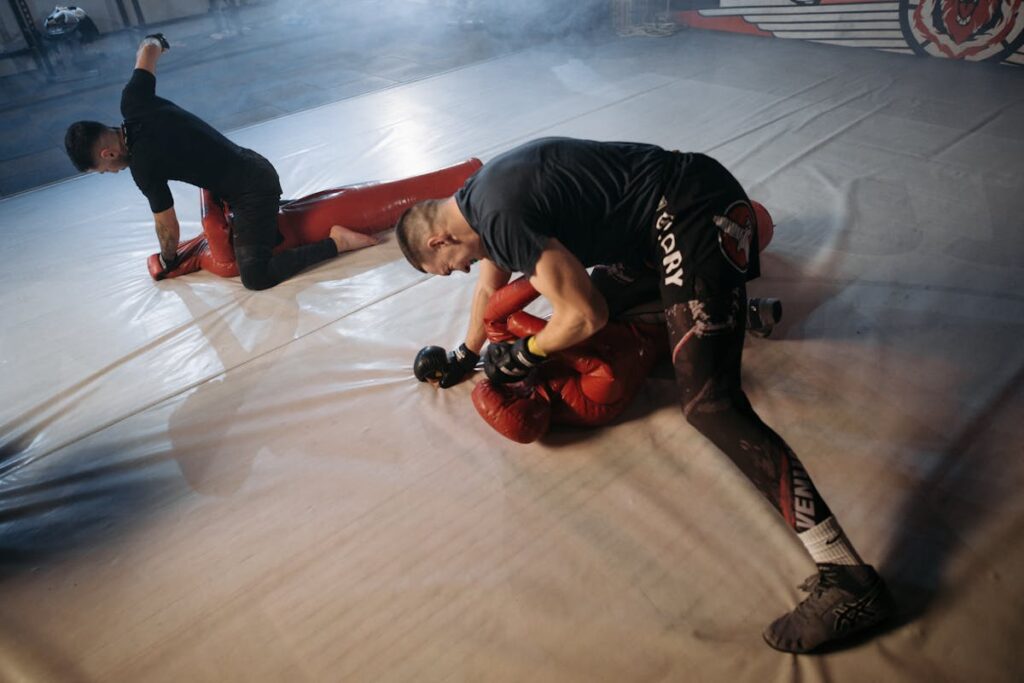
Creating an Effective Workout Plan
Creating an effective workout plan for cardio boxing involves several key components to ensure the regimen is both efficient and sustainable.
Set Clear Goals
Start by defining specific goals. Goals might include:
- Increasing cardiovascular endurance
- Improving agility and strength
- Losing weight
- Enhancing boxing skills
Assess Fitness Level
Conduct a self-assessment or consult with a fitness professional to understand current fitness levels. This helps in designing a customized plan that avoids overtraining and minimizes injury risk.
Structure Your Workout
Structure the workout with the following elements to achieve balanced training:
- Warm-Up:
- 5-10 minutes of light cardio exercises such as jogging or jumping jacks.
- Dynamic stretches to loosen up muscles and prepare the body.
- Main Workout:
- Rounds of shadowboxing with intense cardio bursts.
- Combine punching combinations (jabs, hooks, uppercuts) with footwork drills.
- Include high-intensity interval training (HIIT) to increase heart rate and burn fat.
- Bodyweight exercises such as push-ups, squats, and planks to build strength.
- Cool-Down:
- 5-10 minutes of light stretching and deep breathing to lower heart rate.
- Foam rolling to aid muscle recovery.
Frequency and Duration
Determine the frequency and duration based on fitness goals:
- Beginners: 2-3 sessions per week, each lasting 30-45 minutes.
- Intermediate: 3-4 sessions per week, each lasting 45-60 minutes.
- Advanced: 4-5 sessions per week, each lasting 60 minutes or more.
Monitor Progress
Track progress regularly by noting:
- Improvements in endurance, speed, and strength.
- Reduction in body measurements and weight.
- Enhanced technique and form.
Nutrition and Hydration
Incorporate a balanced diet rich in proteins, complex carbohydrates, and healthy fats. Ensure proper hydration before, during, and after workouts to maintain optimal performance.
Rest and Recovery
Include rest days in the workout plan to allow muscles to recover:
- Active Rest: Light activities such as walking or yoga on rest days.
- Proper Sleep: Ensure 7-9 hours of quality sleep each night.
Modify and Adapt
Adjust the workout plan based on feedback from tracking progress or changes in fitness goals. Introducing new exercises and varying intensity levels keep the training engaging and effective.
Common Mistakes to Avoid
Ignoring Proper Warm-Up and Cool-Down
- Skipping the warm-up phase can lead to strains and injuries.
- Not cooling down can cause dizziness and muscle stiffness.
- Spend at least 5-10 minutes on each to prepare and recover the muscles.
Overtraining
- Pushing too hard without adequate rest can result in burnout and injuries.
- Limit sessions to 3-4 times per week initially, increasing the frequency gradually.
- Incorporate rest days to allow the body to repair and grow stronger.
Poor Technique
- Incorrect form can reduce the effectiveness of the workout.
- Ensure proper stance, punches, and footwork to maximize benefits and avoid injuries.
- Consider taking a few classes from a professional to learn correct techniques.
Not Staying Hydrated
- Dehydration negatively impacts performance and recovery.
- Drink water before, during, and after the workout.
- Avoid excessive caffeine or alcohol, as they can dehydrate the body.
Inconsistent Training
- Irregular sessions will hinder progress and impede fitness goals.
- Stick to a consistent schedule for better results and habit formation.
- Use a workout journal or app to track progress and maintain motivation.
Neglecting Nutrition
- Poor dietary choices can undermine workout efforts.
- Consume a balanced diet rich in proteins, complex carbs, and healthy fats.
- Avoid fad diets that may lack essential nutrients required for recovery and energy.
Focusing Solely on Cardio
- Cardio alone cannot achieve a well-rounded fitness routine.
- Incorporate strength training and flexibility exercises to enhance overall fitness.
- Balance cardio with workouts like weightlifting, yoga, or Pilates.
Setting Unrealistic Goals
- Overly ambitious goals can lead to frustration and demotivation.
- Set specific, measurable, and achievable targets.
- Celebrate small milestones to maintain motivation and track progress.
Diet and Nutrition for Cardio Boxing
Diet and nutrition play a critical role in enhancing performance and results in cardio boxing. A balanced nutrition plan fuels the body, aids in recovery, and supports overall health. The dietary needs of cardio boxing enthusiasts can be broken down into several key components:
Macronutrients
- Carbohydrates:
- Primary energy source for high-intensity workouts.
- Important for maintaining glycogen stores in muscles.
- Recommended sources: whole grains, fruits, vegetables, and legumes.
- Proteins:
- Essential for muscle repair and growth.
- Supports recovery after intense training sessions.
- Recommended sources: lean meats, fish, dairy products, beans, and nuts.
- Fats:
- Necessary for absorbing fat-soluble vitamins and providing sustained energy.
- Should come from healthy fats.
- Recommended sources: avocados, nuts, seeds, and olive oil.
Micronutrients
- Vitamins and Minerals:
- Support immune function, energy production, and bone health.
- Important vitamins: Vitamin C, Vitamin D, B-complex vitamins.
- Essential minerals: Calcium, Magnesium, Iron, and Potassium.
- Recommended sources: a variety of fruits, vegetables, whole grains, and lean proteins.
Hydration
- Maintaining hydration is critical for performance and recovery.
- Water intake should be adjusted according to the intensity and duration of training sessions.
- Electrolytes should be replenished, especially after intense or prolonged workouts.
- Recommended sources: water, electrolyte drinks, coconut water.
Pre- and Post-Workout Nutrition
- Pre-Workout:
- A meal rich in carbohydrates and moderate in protein 2-3 hours before the workout.
- Light snacks such as a banana or energy bar 30-60 minutes before training.
- Post-Workout:
- A meal or snack that combines protein and carbohydrates within 30 minutes to 2 hours after exercise.
- Examples include a protein shake with fruit, a turkey sandwich on whole grain bread, or yogurt with granola.
Meal Timing
- Consistent meals and snacks help maintain energy levels and optimize performance.
- Smaller, more frequent meals can prevent energy slumps and keep metabolism steady.
- Example meal timing: breakfast, mid-morning snack, lunch, mid-afternoon snack, dinner, and possibly a post-dinner snack.
Sample Meals and Snacks
- Breakfast: Oatmeal with berries and almonds.
- Snack: Greek yogurt with honey and chia seeds.
- Lunch: Grilled chicken breast with quinoa and steamed vegetables.
- Snack: Apple slices with peanut butter.
- Dinner: Baked salmon with sweet potatoes and a leafy green salad.
Focus on nutrient-dense foods to support the rigorous demands of cardio boxing and optimize overall health and performance.
Tracking Your Progress
Monitoring progress is essential in a cardio boxing workout regimen. It helps ensure that individuals are on track to meeting their fitness goals. Here are several methods to track progress effectively:
1. Using Fitness Apps and Wearables
Fitness apps and wearables have become an integral part of workout routines. They provide detailed analytics on performance, including calories burned, heart rate, and duration of workouts. Some popular options include:
- Fitness Trackers: Devices like Fitbit or Garmin offer comprehensive tracking features.
- Smartwatches: Apple Watch and Samsung Galaxy Watch provide apps tailored for cardio boxing.
- Dedicated Apps: Apps such as MyFitnessPal or Strava help monitor workout stats and progress over time.
2. Maintaining a Workout Journal
A workout journal is a valuable tool for monitoring daily performance. It allows the recording of key details such as:
- Types of Exercises Performed: Listing each activity conducted during the session.
- Duration and Intensity: Noting the length and intensity level of each workout.
- Perceived Exertion: Rating the difficulty of the workout on a scale of 1 to 10.
- Progress Notes: Observations about improvements or areas needing attention.
3. Taking Progress Photos
Visual documentation is an effective motivator. It provides a tangible look at physical changes over time. Here are tips for taking progress photos:
- Consistent Timing: Take photos at the same time of day, preferably in similar lighting conditions.
- Standard Poses: Use the same poses each time to ensure comparability.
- Regular Intervals: Schedule photo sessions regularly, such as once a month.
4. Measuring Physical Metrics
Regular measurements help gauge physical changes and improvements. Key metrics to track include:
- Body Weight: Use a reliable scale to measure weight in the morning before eating.
- Body Measurements: Track measurements of the waist, hips, chest, arms, and legs using a tape measure.
- Body Fat Percentage: Utilize body fat scales or calipers for estimates.
5. Setting Incremental Goals
Setting small, achievable goals helps maintain motivation. These can include:
- Increasing Workout Duration: Gradually extend workout time by a few minutes each session.
- Enhancing Intensity: Incorporate more challenging routines or heavier weights.
- Mastering Techniques: Focus on perfecting specific boxing techniques or combinations.
6. Seeking Feedback from a Trainer
Professional feedback offers invaluable insights into technique and performance. A trainer can provide:
“Constructive criticism on form and advice on how to improve performance. Personalized training plans that align with individual progression.”
7. Checking Resting Heart Rate
Monitoring resting heart rate provides a useful indicator of cardiovascular fitness. Tips include:
- Morning Measurements: Take the pulse right after waking up.
- Tracking Changes: Record weekly measurements to observe trends.
Tracking progress in a cardio boxing workout regimen ensures consistent improvement and helps stay motivated by providing clear evidence of achievements and advancements.
Incorporating Cardio Boxing into Your Routine
Incorporating cardio boxing into an existing fitness regimen can provide several benefits. To get started, it is essential to identify the key components of a cardio boxing workout and how they can be seamlessly integrated. Here are steps to incorporate cardio boxing into any routine:
Assessing Fitness Level
Before starting, one should assess their fitness level to make appropriate modifications. This ensures the workout is challenging yet manageable.
Choosing the Right Gear
Proper gear includes:
- Boxing gloves: Provide wrist support and protection.
- Hand wraps: Protect knuckles and wrists.
- Comfortable attire: Allows free movement.
- Boxing shoes: Offer ankle support and grip.
Setting Realistic Goals
Establishing clear, realistic goals helps keep track of progress. Goals can include:
- Increasing stamina.
- Improving coordination.
- Weight loss or muscle toning.
Breaking Down the Workout
A typical cardio boxing session can be structured as follows:
- Warm-Up (5-10 minutes)
- Jump rope.
- Arm circles.
- Light jogging.
- Main Workout (30-45 minutes)
- Basic punches (jabs, crosses, hooks, uppercuts).
- Combination drills (jab-cross-hook, jab-uppercut-cross).
- Footwork drills.
- Cardio Intervals
- High knees.
- Burpees.
- Shadow boxing.
- Cool Down (5-10 minutes)
- Stretching exercises targeting arms, legs, and core muscles.
Frequency and Intensity
It is recommended to start with 2-3 sessions per week, gradually increasing to 4-5 sessions. Intensity should also be progressively increased as fitness improves.
Cross-Training
Combining cardio boxing with other forms of exercise can prevent burnout and improve overall fitness. Options include:
- Strength training: Enhances muscle strength.
- Yoga: Improves flexibility and mental focus.
- Running: Boosts cardiovascular endurance.
Tracking Progress
Regular tracking of progress helps maintain motivation and adjust the routine as necessary. This can be done through fitness apps, journals, or professional trainers.
Seeking Professional Guidance
For beginners, seeking guidance from experienced trainers can help ensure proper technique and reduce the risk of injury. Many gyms offer cardio boxing classes tailored to different fitness levels.
Staying Consistent
Consistency is key to seeing results. Sticking to a schedule and gradually increasing the intensity ensures sustainable improvement.
Following these steps, anyone can effectively incorporate cardio boxing into their fitness routine, reaping the benefits of this high-energy workout.
Cool Down and Recovery
A proper cool down and recovery process is essential for maximizing the benefits of a cardio boxing workout regimen. It helps to gradually lower the heart rate, reduce muscle stiffness, and prevent injury.
Cool Down Exercises
- Light Jogging or Walking:
- Spend 5-10 minutes slowly jogging or walking to gently decrease the intensity of the workout.
- Maintain a relaxed pace to allow the heart rate to gradually return to normal.
- Breathing Exercises:
- Practice deep breathing to help relax the body.
- Inhale deeply through the nose, hold for a few seconds, and then exhale slowly through the mouth.
- Dynamic Stretches:
- Perform dynamic stretches such as arm circles, leg swings, and trunk rotations.
- These stretches should be gentle and controlled to avoid sudden movements that could cause injury.
Recovery Techniques
- Hydration:
- Rehydrate with water or an electrolyte drink.
- Proper hydration supports muscle recovery and replenishes lost fluids.
- Nutrition:
- Consume a balanced meal or snack within 30-60 minutes post-workout.
- Focus on a mix of protein and carbohydrates to promote muscle repair and energy replenishment.
- Foam Rolling:
- Use a foam roller to perform self-myofascial release on major muscle groups.
- Roll gently over areas like the quads, hamstrings, and back to alleviate tension and enhance blood flow.
- Static Stretching:
- Hold static stretches for 15-30 seconds to improve flexibility and ease muscle tightness.
- Target muscles used during the workout, such as the shoulders, back, and legs.
- Rest and Sleep:
- Ensure adequate rest and quality sleep each night for overall recovery.
- Aim to get 7-9 hours of sleep to optimize physical and mental recovery.
Summary
Cooling down and proper recovery are integral to any cardio boxing workout regimen. By incorporating these practices, individuals can reduce the risk of injury, improve performance, and maintain overall well-being.
Success Stories and Testimonials
Sarah’s Transformation
Sarah started her journey with cardio boxing to lose weight and improve her confidence. By committing to three sessions a week, she began noticing significant changes both mentally and physically within just a few weeks. Sarah reported:
“Cardio boxing has transformed my life. I lost 15 pounds in three months, and my energy levels have soared. I feel fitter and more empowered than ever.”
John’s Endurance Boost
John, a marathon runner, sought an additional exercise regimen to enhance his endurance. He incorporated cardio boxing into his routine, and the results were remarkable:
- Improved stamina during long runs
- Faster recovery times post-training
- Enhanced agility and coordination
John credits cardio boxing for his successful performance in his latest marathon, finishing with a personal best time.
Ana’s Mental Health Benefits
Ana, a busy professional dealing with high stress levels, turned to cardio boxing as a way to unwind. After participating in regular sessions, she experienced:
- Reduced stress and anxiety
- Better focus at work
- Improved sleep patterns
Ana shares:
“Cardio boxing has been a lifesaver. It’s my go-to stress reliever, and I feel so much more balanced and centered after each session.”
Mark’s Strength Gain
Mark sought to increase his upper body strength while shedding some extra pounds. Through dedicated cardio boxing workouts, he achieved:
- Noticeable muscle tone in his arms and shoulders
- Leaner body composition
- Enhanced overall fitness
Mark remarks:
“The combination of intense cardio and boxing moves has really shaped up my physique. I’ve not only lost weight but also gained strength.”
Lisa’s Motivation and Community
Lisa joined a cardio boxing class to stay active. Soon, she found herself part of a supportive community, which boosted her motivation. Lisa notes:
“The camaraderie in the class keeps me coming back. We motivate each other, share tips, and celebrate our progress together. It’s more than just a workout; it’s a team effort.”
Fitness Enthusiasts’ Recommendations
Multiple fitness enthusiasts advocate for cardio boxing due to:
- High-calorie burn rate
- Improved cardiovascular health
- Engaging workout routine
This enthusiasm highlights the effectiveness of cardio boxing for diverse fitness goals, from weight loss to stress management. The testimonials illustrate the wide-ranging benefits experienced by individuals, showcasing the inclusive and transformative nature of the workout regimen.
Conclusion and Next Steps
Cardio boxing provides significant physical and mental health benefits when incorporated into a regular fitness routine. Achieving the desired results requires a committed and systematic approach that includes the following phases:
- Assessment and Goal Setting:
- Before starting, individuals should assess their current fitness level.
- Establish clear, attainable goals suitable for their fitness stage.
- Create a realistic timeline for achieving these goals.
- Developing a Workout Plan:
- Design a varied workout plan to maintain interest and motivation.
- Include warm-up and cool-down sessions in every workout.
- Combine different cardio boxing exercises to target various muscle groups.
- Gradually increase intensity and duration to avoid burnout and injury.
- Essential Gear and Safety Precautions:
- Utilize proper boxing gear, such as gloves, hand wraps, and suitable footwear.
- Ensure a safe workout environment with enough space and appropriate flooring.
- Maintain hydration and follow a balanced diet to support fitness efforts.
- Learning Proper Techniques:
- Focus on mastering basic boxing stances, punches, and footwork.
- Seek guidance from professional trainers to adopt correct forms.
- Regularly practice techniques to build muscle memory and enhance performance.
- Engaging in Regular Practice:
- Integrate cardio boxing sessions at least three times per week.
- Mix individual practice with group classes for variety and feedback.
- Track progress and adjust workouts as needed to stay on course.
- Evaluating Progress:
- Periodically evaluate fitness levels and assess goal achievement.
- Celebrate milestones and reassess goals for continued improvement.
- Identify areas needing additional work and make necessary adjustments.
Building resilience and maintaining a positive mindset are vital for long-term success in cardio boxing workouts. Commitment to the regimen, coupled with the outlined steps, will offer fruitful results over time. Engaging in such a robust and well-planned fitness program ensures that individuals can look forward to improved health, increased vitality, and enhanced mental well-being. The road to fitness through cardio boxing opens new doors to personal achievements and fulfilling experiences.

